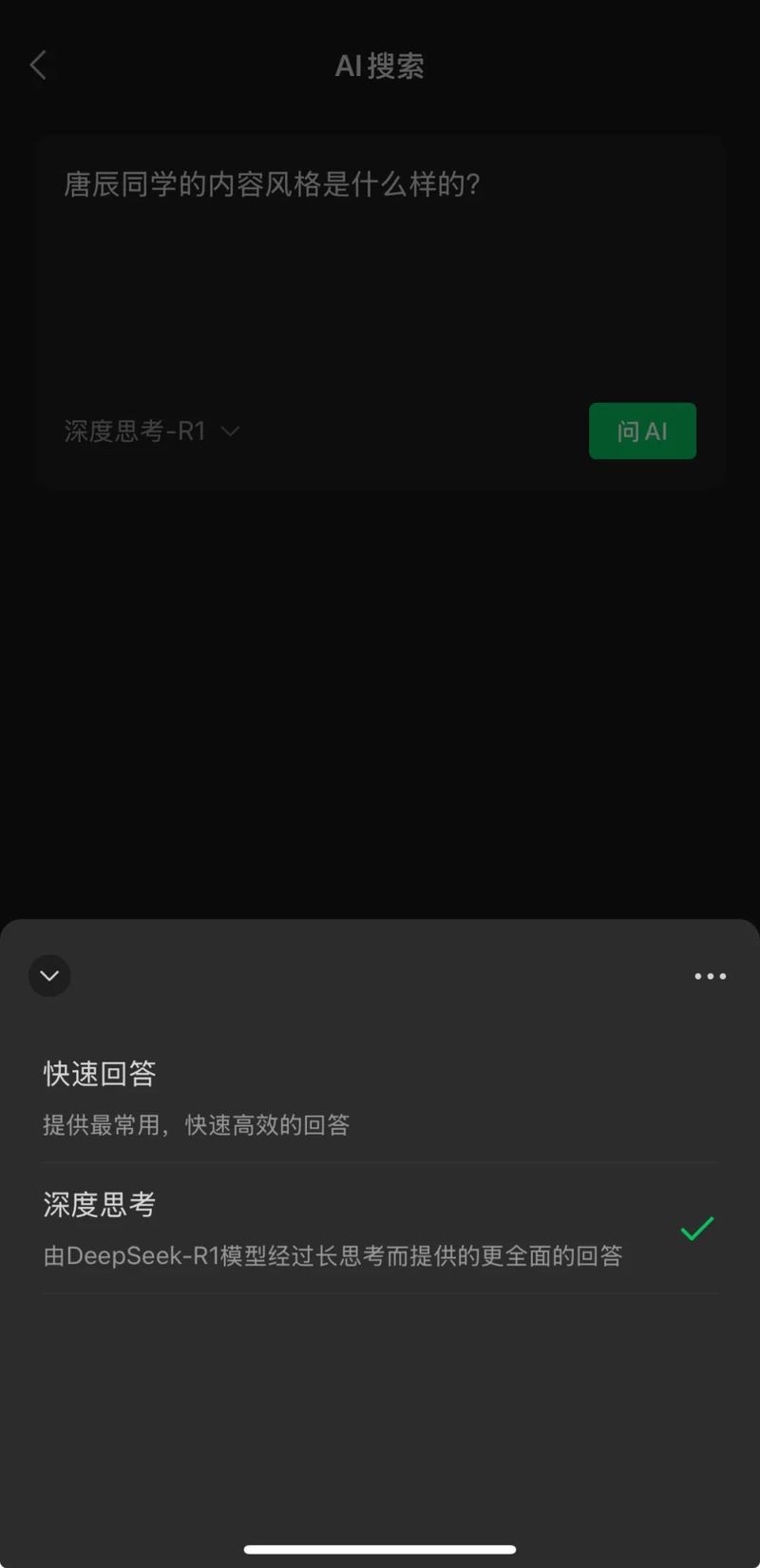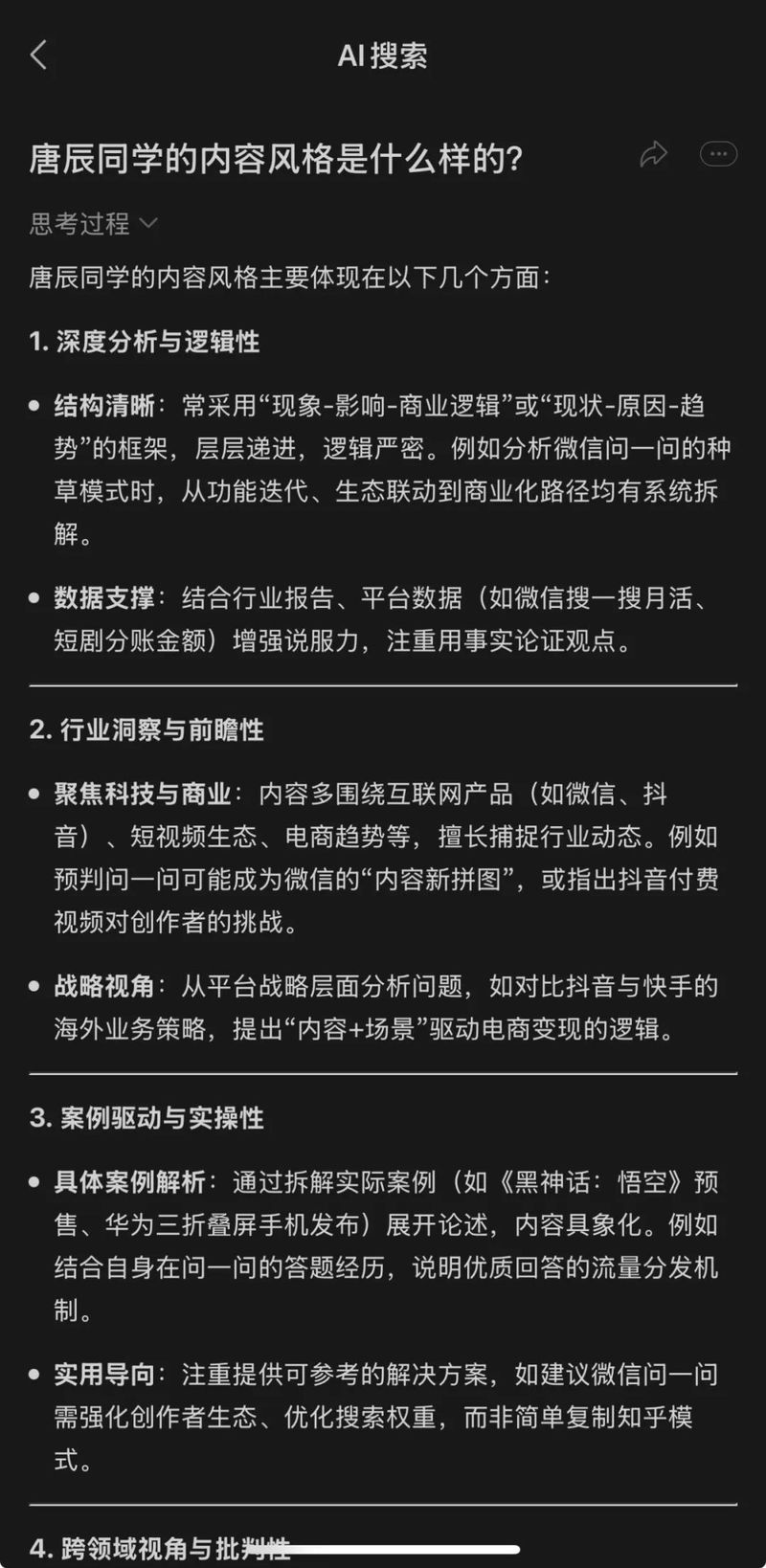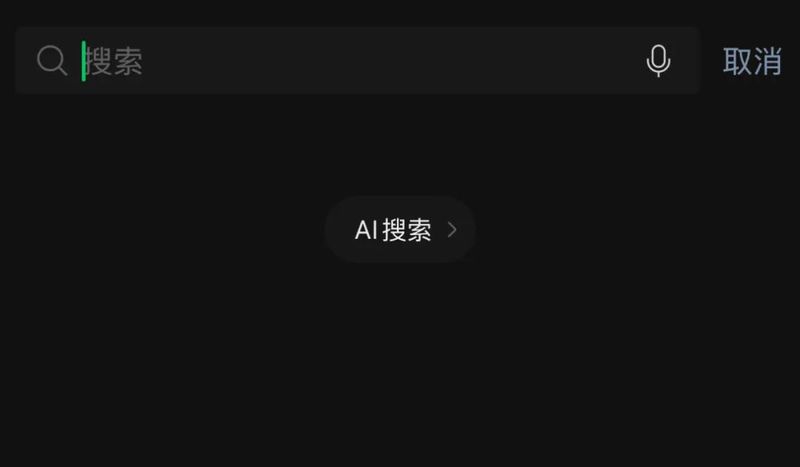WeChat is slower, or it may be faster.
Gray testing is connected to DeepSeek, and WeChat AI search is ready to emerge?
Wen| Student Tang Chen
Why is WeChat search connected to DeepSeek at this time?
Late at night on February 15, Tang Chen was using WeChat Search to search and found that WeChat Search was being tested to connect DeepSeek-R1. Some WeChat users can click on the WeChat search box and enter the AI search page. At the AI portal, they can provide two options: quick answers or in-depth thinking.

“King Fried Combination”
According to the page introduction, the quick question and answer mode provides the most commonly used, fast and efficient answers. In fact, the quick Q & A is the AI Q & A function launched by WeChat in mid-2024: In addition to providing regular search results, WeChat search will also display AI-generated (AIGC) answers at the top of the results page.
During the actual measurement, I asked Tang Chen what kind of content style was, deeply thought and demonstrated his thinking process in detail, logically analyzed relevant search results, and extracted key information.

Finally, the in-depth thinking model provides summaries of five aspects: in-depth analysis and logic, industry insight and forward-looking, case-driven and practical, cross-domain perspective and criticism, and language style (professional but vivid). List typical content scenarios separately.
Moreover, in-depth thinking also gives reading suggestions: Tang Chen’s content is suitable for readers who pay attention to Internet industry trends and product operation strategies, and especially provides practitioners with in-depth interpretation that combines theoretical framework and practical reference.
The results provided by this in-depth thinking include both public account tweets and web information, and support for continued questioning at the bottom of the page. However, limited by the corpus and training effect, there are still problems such as information cocoons, historical answers cannot be found and continuous answers cannot be answered.
WeChat’s function introduction page shows that this product involves the provision and use of DeepSeek’s open source model. The DeepSeek series of open source large models are provided by DeepSeek Company. I would like to thank DeepSeek Company and the DeepSeek open source community for their contributions to open source of large models and related research.
Currently, only some users are qualified for the test. This also means that the whirlwind of DeepSeek has already reached WeChat, and WeChat has also used this to add AI to search scenarios again, one step further towards the goal of building an intelligent knowledge hub for social scenarios, and its AI search ambitions are also imminent.
Regarding the cooperation between WeChat +DeepSeek, some netizens commented that the National Games AI+ National-level application is a real Wang Fried combination.
Sword refers to AI search”
What I am more concerned about is why WeChat Search embraces DeepSeek at this time? There may be two reasons for this:
On the one hand, it is affected by the DeepSeek effect. As an advocate of the open source path, DeepSeek’s success is regarded as a victory for the open source model, and the value of open source has also been extremely amplified. Since the Spring Festival this year, major Internet platforms, mobile phone manufacturers, new energy vehicle companies, large model manufacturers, etc. have connected to DeepSeek, hoping to take the lead in this round of open source wave.
Typical example is Baidu, which announced on February 14 that it will launch the Wenxin Model 4.5 series in the next few months and will officially open source from June 30. You know, Baidu has previously emphasized closed source and is also the staunch opponent of open source. One of the key reasons for Li Yanhong’s reversal of attitude was the impact of DeepSeek.
On the other hand, WeChat search embraces DeepSeek, and its own consideration lies in the four words displayed after the user opens the search box: AI search. In other words, WeChat’s greater ambition is to point to AI search.

Previously, Yuanbao mainly promoted its AI search and integrated WeChat ecological content such as Weixin Official Accounts and video numbers as a competitive advantage with other similar AI applications.
This time, WeChat search is directly connected to DeepSeek, which is obviously close to the water and will have a profound impact on the user experience, content ecology, and commercialization path of the WeChat ecosystem.
For example, at the WeChat content ecosystem level, WeChat AI search integrates public account articles, video numbers, Mini programs services, circle of friends, web pages and other content to achieve one-stop search of social + information + services. Especially for content creators, AI search will solve the problem of content sinking with higher efficiency: the value of long-tail content such as historical articles on public accounts, long and short videos of video numbers, may be rediscovered due to AI recommendations. This will further stimulate the production of in-depth, valuable content.
On this basis, WeChat’s user experience and commercialization path will also face reconstruction. The scattered content information of the WeChat ecosystem (public accounts, video accounts, Mini programs, etc.) will be aggregated across scenarios through conversational intelligent interactions, changing the traditional search reliance on keyword matching, and presenting results more accurate and efficient.
For example, if a user searches for how to take an online ride-hailing at Beijing Capital Airport T3, I asked the fastest online ride-hailing guide for Beijing Capital Airport Terminal T3 on WeChat before, and it will be directly displayed on the search results page., and may be related to relevant public account articles or merchant stores.
Previously, Tang Chen once wrote “Want to copy a message on WeChat in the search box?” The article analyzes that WeChat is already a national-level super App with more than 1.3 billion users, and different content carriers have grown within it, such as public accounts, Mini programs, circle of friends, video numbers, take a look, listen, etc.
For a long time in the past, the content pool within the WeChat ecosystem was mostly fragmented and separated, making it difficult for users to obtain relevant information through a certain channel or channel. Search naturally becomes the key to opening the WeChat content library. Through people to find information, it complements recommendations, opens up the entire WeChat domain and connects the entire WeChat ecosystem to carry out effective information distribution.
Regarding the positioning of Souyisou, the WeChat team once stated that WeChat is not being a purely independent search engine, but as a part of the WeChat ecosystem, allowing better and more appropriate content and services to produce more accurate connections with users.
The search results presented are based on the content of the WeChat ecosystem and mainly include three types: information, services, and brands.
Products such as DeepSeek are connected to WeChat, and the large model has found suitable use scenarios. WeChat can use AI to analyze user behavior and search content within the WeChat ecosystem, further personalized recommendations, and even predict demand in advance before users search.
For example, users can directly search for keywords such as taxi takeout and jump to Mini programs without having to jump out of WeChat, forming a search-service closed loop.“”“”“” Its typical performance is that in October 2024, WeChat officially announced the launch of the search direct function.“”
This shift from passive search to active recommendation is also a change in WeChat search ‘s direction to target AI search and build a more intelligent search service system.
But for WeChat search, its advantages and challenges stem from the closed nature of the WeChat ecosystem. Even if AI search is about to emerge, the privacy protection issues faced by the big model industry, the complex experience caused by over-reliance on AI, and the illusion of big models will also be challenges faced by WeChat.
From this point of view, WeChat’s restraint is not all a bad thing: slower, or faster.
It is not allowed to reproduce at will without authorization, and the Blue Whale reserves the right to pursue corresponding responsibilities.



